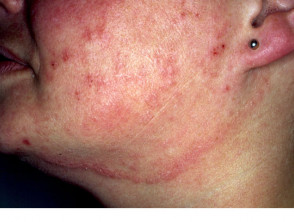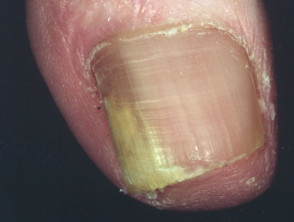DermNet provides Google Translate, a free machine translation service. Note that this may not provide an exact translation in all languages
Quiz
Skin conditions due to fungi, bacteria and viruses – 10 cases
This quiz will test how good you are at diagnosing skin conditions due to fungi, bacteria and viruses.
For each of the ten cases, study the image(s) and then answer the questions. You can click on the image to view a larger version if required.
Each case should take approximately 2 minutes to complete. There is a list of suggested further reading material at the end of the quiz.
When you finish the quiz, you can download a certificate.
Case 4
A 32 year-old woman presented with an erythematous irritable eruption on the left side of her face that had slowly expanded over several months. You note an abnormal toenail.
Sign up to the newsletter
© 2024 DermNet.
DermNet does not provide an online consultation service. If you have any concerns with your skin or its treatment, see a dermatologist for advice.

